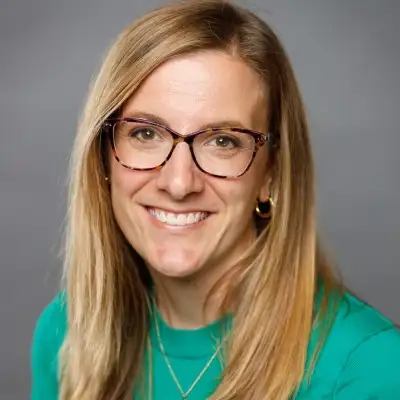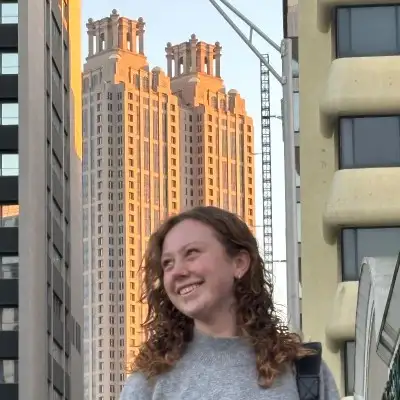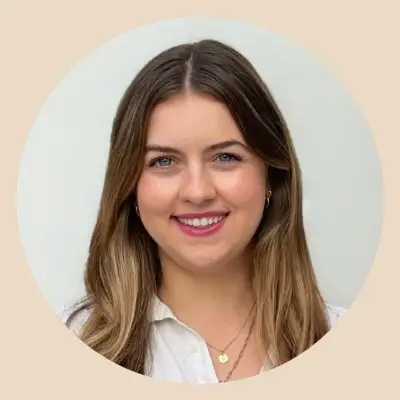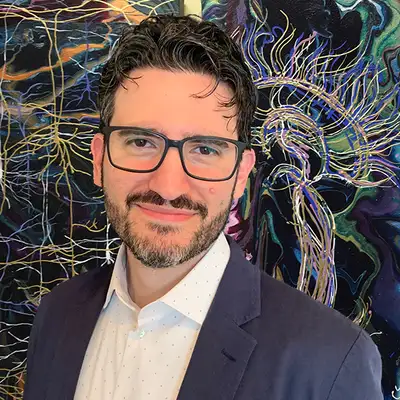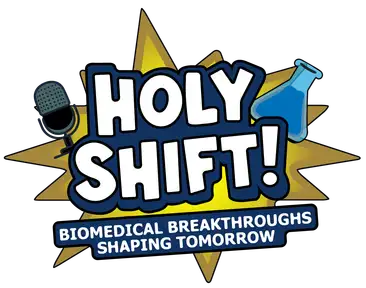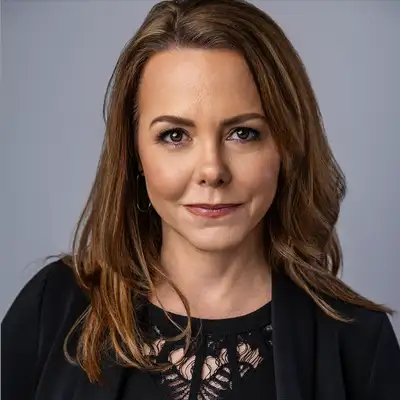
A Life in Balance | Lena Ting
Sometimes people hear robots with humans and they get terrified of that. Right, they can be terrified. Right, right. But I'm thinking of the individual who serves in the war and comes back and has lost some limbs, right? Right, right.
Angela Gill Nelms:And their quality of life and the PTSD and the depression and suicide rate of those, if they had something like this that would allow them to reengage once again in the community, what a huge impact on them, their family and the whole community they have. Welcome to Holy Shift Biomedical Breakthrough Shaping Tomorrow. What is biomedical engineering exactly? It's about engineering solutions that improve human health from new medical imaging tools to personalized cancer treatments. HolySHIFT reveals the people, passion, and purpose powering the future of biomedical research.
Angela Gill Nelms:Welcome back. Today's guest is a professor of biomedical engineering and rehabilitation medicine at Georgia Tech and Emory University. She studies how we move our bodies from walking to dancing and how to get us moving again when things go wrong, like after a muscle injury or Parkinson's disease. She's won many awards for her research, teaching and mentorship of young scientists and runs a training program in neuroscience to launch the careers of the next generation. With all the focus on movement and training, maybe it's no surprise that to relax, she competes in frisbee challenges with her pup, Sulu.
Angela Gill Nelms:Let's dig in with Doctor. Lena Ting and explore what moves us. Thank you for coming down biking over this morning to have this conversation about your research.
Lena Ting:Thanks for having me Angela.
Angela Gill Nelms:Absolutely. Okay, let's dig in. Okay. First, I want
Angela Gill Nelms:to hear about your research and I want to hear about it from a 10,000 fit level. So can you tell the audience what you do?
Lena Ting:Sure. My lab is called the Neuromechanics Lab and basically it's about how our nervous system, our brain, spinal cord and nerves and our bodies, the mechanical parts, bones and muscles, work together to create movement.
Angela Gill Nelms:Okay. So when we think about movement, dig in a little bit more of that. What kind of movement do you research in your lab?
Lena Ting:I mostly study balance control and walking. Those are really fundamental behaviors that everybody needs to get around in life. And I like to think about it as maybe the nervous system is like the software and your body is the hardware. And instead of studying just one or the other, I wanna know how they interact to create all of the different things we can do, not just walking in balance. Those are the easiest for us to study.
Lena Ting:Fundamentally, how do we use the same parts to do things like dance or play sports or limp or create a new movement that nobody's done before?
Angela Gill Nelms:Okay. So then tell me, why should I care about research about movement? Well, it's really something we can't break down into parts.
Lena Ting:So a lot of fields will study just neuroscience, just the neurons, or just the muscles, but movement is ultimately a creation of all those parts interacting with each other. And so that means when any of those parts has an injury or disease, it's going to affect our movements. And in fact, lots of different types of impairments are reflected in our movements.
Angela Gill Nelms:Can you list what some
Lena Ting:of those You can think about ones that actually affect your movement. Like I hurt a muscle or I lost a limb, but also if I have a stroke, it changes the parts of my brain that might control the movement or Parkinson's disease, but also even other diseases we don't think of as movement disorders, like psychiatric disorders, could also have these sort of signatures of how you move that we might be able to kind of see in the movement.
Angela Gill Nelms:Okay. How did you get interested in movement in that part of science? I think when I was a kid, I liked to
Lena Ting:run around and do things a lot. And I was also interested in math and biology, so I guess it's sort of all of those things coming together. And then in, I think, junior high in science class, we had an assignment to read a paper in Scientific American about somebody who was activating muscles and paralyzed people. Oh, amazing. And it really sparked some kind of interest in me of how technology and science and biology could come together because, as you know, those are often taught as different classes in school.
Angela Gill Nelms:So in your lab So tell us a little bit about in your lab. So when you're talking about Sorry. Because I think I've seen videos of your We've known each other for many, many years. I think I've seen videos of maybe electrodes going on either parts of the body. Right.
Angela Gill Nelms:Or Yeah. Walk us through what this looks
Angela Gill Nelms:like to research it. So the electrode is gel and a sticker. It's the
Lena Ting:same thing that you would use when you get your heart monitor jack. So the heart generates electricity when it beats and your muscles also generate electricity. And so we can measure the electricity from your, what we call skeletal muscles, works similar to the heart muscle. And now we've actually advanced to studying the electricity in the brain. So we put the same kind of gel on your head and measure much smaller electrical signals that tell us about the activity of the brain.
Angela Gill Nelms:Wow, that is fascinating. Okay, so then thinking about this movement, and we've talked about some conditions such as Parkinson's and stroke, think are some common Although ones we think the psychiatric challenges as well is really interesting. Tell us about how your research impacts the community.
Lena Ting:Well, mobility is something that's really important for everybody and for healthy aging, for doing the things we want to do. And so it's maybe something we take for granted until we lose it. Yeah, absolutely. Right? And so because it's also so integrative, people can look at it from different angles, but a lot of times people have to go to different specialists to talk about their ailments, but in our work, we're really trying to put it together.
Lena Ting:How does it cross all of these different aspects of how my muscles work, how my brain works? And fundamentally I'm studying balance control, which is really important because falls are a huge endemic, especially in older adults, it can cause injuries and hospitalization. Oh yeah, and I
Angela Gill Nelms:know a certain age for women when they have falls and break their hips, their longevity after that is greatly diminished. So the ability to mitigate that and stop that would be huge.
Lena Ting:Right, right.
Angela Gill Nelms:So when you're looking back at the years you've been doing this research, can you think of one major shift that's happened because of research like this?
Lena Ting:I think there's been a lot more collaboration across, say, physical therapy researchers and engineering researchers over That's true. Yeah. So part of that is we have new ways of looking at these signals that we measure and understanding what they might mean in terms of what the impairment somebody has is and how you might want to go about treating it. And yeah, so that working together is maybe a new perspective on how people think about how people move. Now, innovation in medicine takes a long time.
Lena Ting:Yes. So I would say our work has really impacted research in physical therapy, moving from basic science into research and physical therapy. And people are trying to push that more into clinical practice. And maybe we've had a small influence. I would say we have an even larger influence in people developing robots that move like humans, trying to learn from principles of people.
Lena Ting:And then some of those robots are ones that actually are assisting people with impairments. So wearable robots for moving around some of the principles that people would use to have it walk more like a person
Angela Gill Nelms:or walk. What's a wearable robot look like? Well, they call them exoskeletons.
Lena Ting:Yeah. Okay. And actually there's some soft ones now that are integrated in clothing. So usually it's like a brace that you have that has motors on it or some other way of moving that can either help people who have lost the ability to move or help retrain movements. That's the goal.
Angela Gill Nelms:What do think the like, how I love this. I actually I cannot wait to see some videos of this. So, we will find some videos and include them in the show notes because this is super nerdy here. So, let's talk about the lives of the people who receive these. What did their life look like before having some of these wearable robots?
Angela Gill Nelms:And what does their life look like after? What are some things that the patients are telling you?
Lena Ting:Well, I don't work directly with the patients. So as I said, our work just inspires the creation of different ways to build and use these devices.
Angela Gill Nelms:So what did their life look like before?
Lena Ting:I think we're still in early days of exoskeleton research. There have been some examples of people in research studies being able to stand up again. With people with complete paralysis, they're always usually in a chair, maybe feeling a little bit outside of community because they can't meet you, the eye or they can't reach things on the shelf. So there have been examples, there are examples of robots that have allowed people to walk again in, you know, maybe not normally at a normal speed, but regain some of the activities that they maybe weren't able to participate in. But I think it's still early days for ones if you're fully paralyzed for that to be like an everyday thing that you would use.
Angela Gill Nelms:But this is a key piece is that sometimes we forget that in order to create something amazing, amazing change like that, we have to have these basic blocks of research that then build and amplify upon each other. And that s a lot of the work that you do to then make this possible.
Angela Gill Nelms:And I love what you
Angela Gill Nelms:just said about community and allowing people to feel a part of their community again by restoring some of that natural behavior. That really awesome. I love that.
Lena Ting:Yeah. And so other things that people are doing is activating muscles. So you can take those same electrodes and you can run some energy the other way. So then the muscle contracts when somebody is not able to do so voluntarily. That was the original thing that drove me.
Lena Ting:We're still not there yet. They use it as therapies, but in order to have robust movement, we really have to understand all of the complex ways that the muscles have to be activated to do all those things. So even if you could walk, it doesn't mean you can walk on uneven surfaces or if the wind blows. Interacting with very dynamic environments when we move and even the best robots can't do that. And now we have to have a robot that works with human to interact.
Lena Ting:So that's where we really have to understand how the humans do it or it's not possible to augment how they would do that.
Angela Gill Nelms:It really can have It can lead to Continuing research such as yours and continuing to make that possible can lead to real life and quality of life and enjoyment of life. And even the ability to resume to work and jobs that maybe they wouldn't be able to do otherwise. Go and watch their grandkids play sports because they can actually go and navigate through uneven grass or something like that. So, I mean, really, that's huge.
Lena Ting:Right. But the more exciting thing is if you don't need a robot. Right?
Angela Gill Nelms:Yes. Yes. So,
Lena Ting:I mean, part of what we also study is what happens when you do training or rehabilitation. So we've studied dancers as well as people going through some kind of rehabilitative dance program. And that is sort of taking advantage of your body's own ability to regenerate and grow, to improve movement. So one of the things we care about now that's sort of a new thing is, okay, well, we get people come into the lab and it's like, well, I used to be a tennis player. Is that going to help my balance now?
Lena Ting:And the scientific answer is that we don't know. But we suspect or hypothesize that having a bigger repertoire of movements through some kind of highly skilled training should help you should you have an injury or some kind of neurological or musculoskeletal disease. It gives you more options for how to manage your movement, how to compensate for those types of, various types of impairments.
Angela Gill Nelms:Well, I love what you just said, compensate. Because I was just thinking about this. I used to do Ironman triathlons. And I remember when I finally ended up having foot injury, then it threw off my whole gait. So then I had hip problems.
Angela Gill Nelms:Then I had and and that and as our bodies are trying to compensate for an injury like that. So I loved when you said earlier about physical therapy and trying to educate and determine scientifically the best way to perform physical therapy for a patient to optimize the results. I think that's part of what you're
Lena Ting:saying as well. Right. Right. So when you have a physical injury, we kind of can think about that better. You might limp or do some other things and that might throw you off balance.
Lena Ting:At the same time, your nervous system is relearning those movement patterns. And in some cases that could be a good thing. In some cases you might learn bad movement patterns that down the line create joint problems. That's very well known in people with lower limb loss because they've shifted the power in their limbs. They often develop joint disorders, even though they may be very agile with just one limb.
Angela Gill Nelms:I think it's just so fascinating when you think about all the electrical signals through your body and the impact they have on different parts of your life. So what do you think then that healthcare might look like if research like this did not exist?
Lena Ting:I think one of the moves right now is really, especially in movement, to really have a good scientific foundation for how we understand and treat movements. And I think a lot, like I said, we have suspicions and we have practices that we think work, but fundamentally we may not know what those mechanisms, biological or physiological mechanisms are, which means that we can't develop really targeted treatments. So I like to think about it as we don't have the equivalent of like a blood test for a movement impairment. And so that means that a lot of times we're not sure if the treatments we give are gonna work. Oh, yeah.
Lena Ting:So one analogy is if I'm coughing and I have a fever and I go to the doctor, we have to know whether I have a bacterial infection or a virus. If it's a bacterial infection, we know what to do. We give antibiotics. And if it's a virus, we say go home and rest and we'll see you in a few days. So we don't have the equivalent of that for movement disorders.
Lena Ting:So that would be like, we just give everybody antibiotics. Half of them may improve and half of them may not. So it's a waste of resources. It's also telling people to do something that may be detrimental to them because we don't wanna give antibiotics to people if they don't need them. There are a lot of side effects.
Angela Gill Nelms:And resistance builds up.
Lena Ting:Resistance builds up, but you can also have negative responses. So that's really what we're aimed at doing is not having this so called one size fits all approach. And to do that, we really have to get down to some basic physiological principles that may not yet have been fully understood.
Angela Gill Nelms:Yeah, that's amazing. Okay, so tell me what a day in the life of Doctor. Lena Ting looks like. Not just the science part, but what are some other things?
Lena Ting:Well, there's the workdays and the not workdays, so Let's dig in. Alright?
Angela Gill Nelms:Let's say a workday. What does a workday like for you?
Lena Ting:I try to break them up, I wake up, some days I go to the gym. Those days I also then go walk my dog. Sulu. Sulu.
Angela Gill Nelms:Who you play Frisbee with.
Lena Ting:He likes to play Frisbee. Yes. I'll usually do a little bit work at home by myself or a quiet time. And then I go in and I have a lot of people in my lab that I meet with. So we'll have different research meetings, individual meetings, group meetings.
Lena Ting:I either ride my bike into work, which I have a regular bike and an e bike. And when I go home at night, I enjoy cooking dinner. I like chopping vegetables.
Angela Gill Nelms:Creating different food just Is the passion of yours? It's very relaxing for me. So, you've won a
Angela Gill Nelms:lot of awards for your research, for your teaching, and for your mentorship. Let's talk a little bit about the teaching and the mentorship work that you do.
Lena Ting:I feel like everything I do is teaching. To some extent, I work with people of all levels. There could be undergraduates, lots of graduate students, lots of what we call postdoctoral fellows, so people who have their PhDs, but aren't in what we call an independent position as a faculty member yet. And I also mentor a lot of faculty and everybody needs some mentoring, whether you're a student faculty, someone mid career or even senior If you're
Angela Gill Nelms:a human, you need mentoring. Right. So, brings that passion to you? Because some people are really great at it and some not so much. And I know that you are great at it.
Angela Gill Nelms:So, where did you get that passion?
Lena Ting:I honestly don't know because that was not something that was a goal of mine. And in fact, I think if you talked to anyone who knew me beforehand, they would have said that I wouldn't have the patience or desire to be a good mentor. And I think it really happened after I came here to do biomedical engineering and was starting my own lab, was starting teaching and really realizing that kind of the way you present things to people and giving them ownership of it really matters in their own learning and in their ability to work with you on a team and to work collaboratively. And I guess I always felt like there were certain unwritten rules of how to be successful and I had to figure them out for myself. I also had mentors who helped me and I felt like that was important for people to know.
Lena Ting:It's not just study what's in the curriculum and in the book, but a lot of it has to do with how you operate with other people. Science is about people and science is done by people. And it's really important that we understand that. So whether it's how I teach a lecture or how you write your grant or how you interact at a conference, all of those things are really important to successful, creative, and especially collaborative science.
Angela Gill Nelms:And I think that's what a lot of people, they think of scientists as these nerds that are super quiet and introverted and never do anything fun. And I know, I thought that was what an engineer was. I did not want to be an engineer when I was in high school because I said they wear pocket protectors, they tape on their glasses, absolutely. And the reality is, is that these are amazing humans who play frisbee with their dogs, who cook vegetables, who live out in the world and make a huge impact in the
Lena Ting:world,
Angela Gill Nelms:And by making sure that researchers such as yourself can be successful as well, then you help to build up this next generation of researchers and scientists that are making an impact on the community.
Lena Ting:That's true. To be fair, I've had tape on my glasses.
Angela Gill Nelms:I love this. So, let's talk
Angela Gill Nelms:about funding sources. What kind of funding sources make your research possible? Most of
Lena Ting:our current funding is from NIH, which is the National Institutes of Health. And there are many agencies within that. So, most of our funding, it's strange, comes from the National Institute of Child Health and Human Development, which has a lot of different things, but there's a center for rehabilitation, medical rehabilitation. So most of our funding comes from people interested in improving rehabilitation because we study movement and that is something that affects you throughout your life, but we primarily focus on older individuals. We have some money from the National Institute of Aging.
Lena Ting:And then we have had funding from the National Science Foundation, which has really let us do more of the human robot interaction because it's a little bit further away from being ready to be deployed. And so National Science Foundation really lets you do that sort of blue sky research and all of ours was focused on collaboration between humans and robots and how to make that more effective. For the most part, it's getting better now, but robots in factories and things are dangerous. People are here and the robots are there. But we're really interested in these wearable robots, robots that may be a walking motorized walker or something like that, that really have these intimate connections to people.
Lena Ting:Well, I
Angela Gill Nelms:think sometimes people hear robots with humans and they get terrified of that. Right. It can be terrifying. Right, right. But I'm thinking of the individual who serves in the war and comes back and has lost some limbs, right?
Angela Gill Nelms:Right, right. And their quality of life and the PTSD and the depression and suicide rate of If they had something like this that would allow them to reengage once again in the community, put a huge impact on them, their family, and the whole community I'm they thinking about, once I said again, the elderly individual that wants to I remember when I did heart research, I loved seeing patients who improved that said, oh, spent this weekend putting together a puzzle with my grandkid, right, that they couldn't do before. And so I think that this mindset of using robots with humans for good to allow individuals to actually regain this quality of life
Angela Gill Nelms:is so amazing. That's exciting. Yeah. It's similar to the principle in mentoring is you want give people their own agency so
Angela Gill Nelms:that
Lena Ting:they feel like they are empowered in their lives.
Angela Gill Nelms:Yes, yes, yes, yes. Which is not easy to do. And I think sometimes what I see is when we try and do that with really harsh duct tape methods, It doesn't, it doesn't work long term and it doesn't become integral to what, and it doesn't build upon each other. And the work that you do is constantly building one piece onto another to then make something that has the longevity to truly make an impact. Just super cool.
Lena Ting:Yeah, I like to think it's because we're not solving the immediate problems but we're kind of taking two steps back to say, Okay, what do we really not understand that we really need to understand so that we could almost create a new field that could advance research? When we do that, it always involves people from different disciplines, which makes it really, really challenging, but also really fun and interesting. And that's where you need a lot of patience and you need a lot of people skills to communicate people with different training and those training, some of the different values. So if you think about an engineer who's talking about efficiency and algorithms versus a physical therapist who's really caring for a patient and their own personal goals and lives in sort of a compassionate way. How we bridge those two things together?
Angela Gill Nelms:It isn't easy for people with that different training to always come together and meet and even understand how they can each contribute to this kind of goal. Is there something that when you look back, like when you first started versus now, can you think of anything that really has surprised you, is very different from when
Angela Gill Nelms:you thought it would be?
Lena Ting:I I think I'm surprised myself especially because I didn't think I was that interested in teaching. Maybe I was a bit of a nerd and I was like, this is fun. This is fun for me.' And actually I joked because I said I never really wanted to help anybody.
Angela Gill Nelms:And now you help
Angela Gill Nelms:lots of people.
Lena Ting:But it's not necessarily the There has to be something that you're passionate about and things that I just like doing for myself that I find piques my curiosity. It's intellectually challenging. And I'm also an extrovert, so then I get to do it with other people and see their curiosity and creativity sparked. So that's been interesting. Honestly, I started as a mechanical engineer, so this is what's been surprising is that I felt that when you have mechanics, it's nice, like Newton's laws and there's very clear equations you can write down.
Lena Ting:And I thought, Okay, if we could just do this, we would figure out how the brain needs to control the body. And so then I learned about the nervous system. I said, Well, okay, maybe there's something there, but I'm never gonna be a neuroscientist. And today we're actually taking measurements from the brain and thinking about how your cognitive faculties, the parts of your brain that are usually for thinking, actually affect your movements. And it's almost inseparable that these functions that we don't think are just about thoughts in the brain actually can influence how we move our mobility and the robustness of our movements.
Angela Gill Nelms:Which also then ties back to the mental health psychiatric issues as well or challenges and the impact that it could have.
Lena Ting:But more fundamentally, we have very large brains. They help us do lots of things. We also have senses that are very important in balance. And so an urgent healthcare problem is this falls, And increasingly aging population, people lose their balance and they fall. And so we talked about that before, but the problem with balance right now is because we have all of these senses and muscles and movement patterns that can come into play to compensate.
Lena Ting:It's extremely difficult to predict who's going to have that fall. And so right now with the current clinical methods, we can only predict about six months out, but
Angela Gill Nelms:in
Lena Ting:reality, that just means you've gotten to the end of all of your backup resources. So somebody may have been compensating in different ways for years and we're not able to tell people that until right before the crash, literally. So the idea is that if we are taking measurements from the brain, that we could kind of predict or tell people in advance when they still have a chance to do something about it, that they may be compensating in ways they don't realize. And some of the best interventions for balance are simply exercise and doing movements that have you thinking at the same time. And so that's been helpful in what we call neuroprotection as well as this sort of use it or lose it idea with balance.
Lena Ting:So if we can get people active earlier and we can show them that their brain is operating in a way that helps their balance more, we could potentially in the long run keep people from even realizing letting them know they need to attend to their balance problem before it's right before they may have a catastrophic fall.
Angela Gill Nelms:Okay, so I'm gonna start working on my balance tonight.
Angela Gill Nelms:Okay. Okay. What do you think
Angela Gill Nelms:is one thing that an average person needs to know to advocate for research like yours?
Lena Ting:I think we never This was a surprise to me that I went here, but I absolutely think that my training in mechanical engineering now helps us understand how the brain is involved in balance. And we also have a lot of failures. So we've tried a lot of ideas that didn't work. And so you need intrinsic curiosity and the ability to pursue some ideas with the sort of problems that also need to be solved
Angela Gill Nelms:to have effective science. That is amazing. That is amazing.
Angela Gill Nelms:Well, you for biking over here this morning, practicing
Lena Ting:It was your an e bike.
Angela Gill Nelms:Seriously, I'm obsessed now with those balance board And one of my friends has one and I realized my balance as you age, right, it's gotten really bad. So I've been, I think, you know, the AI gods have seen that I'm interested in that because I keep seeing it
Lena Ting:Oh pop my, and I'll keep offering it to you.
Angela Gill Nelms:Yep, yep. But I'm gonna work on my balance.
Lena Ting:Okay.
Angela Gill Nelms:And thank you so much for all the work that you do. Great, It's really making a big impact.
Angela Gill Nelms:This was really fun. This was fun, thank you. Thanks.
Angela Gill Nelms:Sparked your curiosity, pass it along to someone eager to explore the power of research to change lives. As a reminder, the opinions expressed in this podcast are those of the host and guest and do not represent those of any organization mentioned. Be sure to follow or subscribe wherever you get your podcasts so you never miss an episode. To learn more about the research featured on this show, visit bme.gatech.edu or check the show notes for links and resources. Thanks for listening and remember, behind every innovation is a purpose, a person and a powerful story.
Creators and Guests
